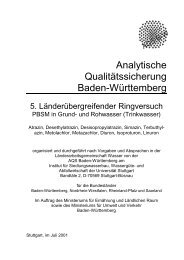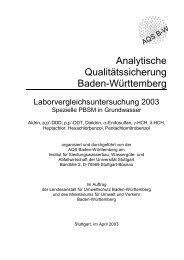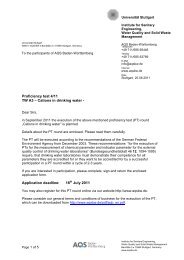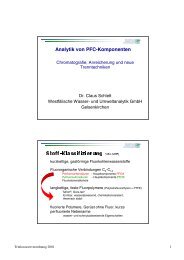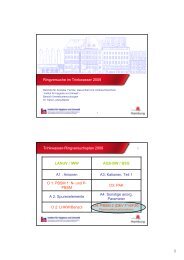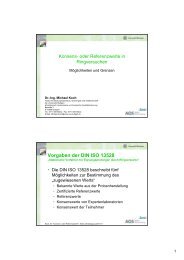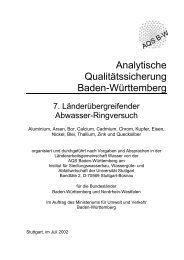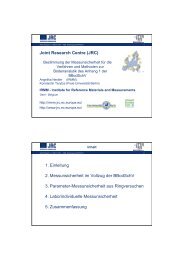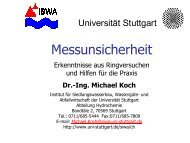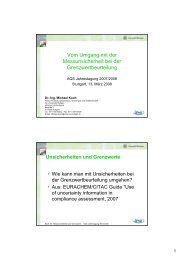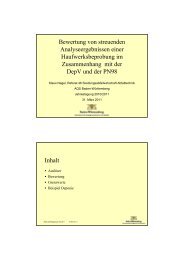Institute for Sanitary Engineering, Water Quality and Solid Waste ...
Institute for Sanitary Engineering, Water Quality and Solid Waste ...
Institute for Sanitary Engineering, Water Quality and Solid Waste ...
You also want an ePaper? Increase the reach of your titles
YUMPU automatically turns print PDFs into web optimized ePapers that Google loves.
<strong>Water</strong> <strong>Quality</strong> Management <strong>and</strong> <strong>Water</strong> Supply WGW<br />
Projects<br />
Development of a low cost technology <strong>for</strong> in-situ<br />
treatment of groundwater <strong>for</strong> potable <strong>and</strong> irrigation<br />
purposes<br />
In many regions of the world arsenic contaminated<br />
water represents a huge problem <strong>for</strong> the health <strong>and</strong><br />
the environment. One of those affected regions is <strong>for</strong><br />
example eastern India (West Bengal). In the course<br />
of the project “Development of a low cost technology<br />
<strong>for</strong> in-situ treatment of groundwater <strong>for</strong> potable <strong>and</strong><br />
irrigation purposes” several activities concerning this<br />
topic took place.<br />
In order to remove arsenic from groundwater <strong>and</strong> to<br />
improve groundwater quality a low cost technology<br />
<strong>for</strong> in-situ (subterranean) treatment of groundwater<br />
was established in eastern India <strong>and</strong> a field trial was<br />
carried out in order to investigate the practical implementation<br />
of this technology on location. Beside the<br />
establishment of a low cost technology <strong>for</strong> subterranean<br />
removal of arsenic amongst others workings concerning<br />
the improvement of agriculture <strong>and</strong> farming<br />
practices to reduce arsenic contamination in the food<br />
chain <strong>and</strong> public relations were conducted.<br />
Financing institution:<br />
European Union (EU)<br />
Project partner:<br />
1. Queen’s University Belfast - School of Chemical<br />
<strong>Engineering</strong> <strong>and</strong> Queen‘s University Environmental<br />
Science <strong>and</strong> Technology Research Centre<br />
(Questor Centre), Großbritannien<br />
2. University of Stuttgart, Germany<br />
3. Miguel Hern<strong>and</strong>ez University, Spain<br />
4. Leiden University, Netherl<strong>and</strong>s<br />
5. National Metallurgical Laboratory, Indien<br />
6. <strong>Institute</strong> of Environmental Management <strong>and</strong> Studies,<br />
Indien<br />
Contact:<br />
Prof. Dr.-Ing. U. Rott<br />
Dipl.-Ing. Ralf Minke, AOR<br />
Dipl.-Ing. H. Kauffmann<br />
Storage tank <strong>for</strong> the aerated water to be reintroduced<br />
Co-funded by the European Union under:<br />
“Asia Pro Eco Programme - a programme dedicated to promote<br />
Outer view of the well<br />
sustainable solutions to environmental problems in Asia”.<br />
„The contents of this publication is the sole responsibility of<br />
ISWA - WGW <strong>and</strong> can in no way be taken to reflect the views of<br />
the European Union“.<br />
51




